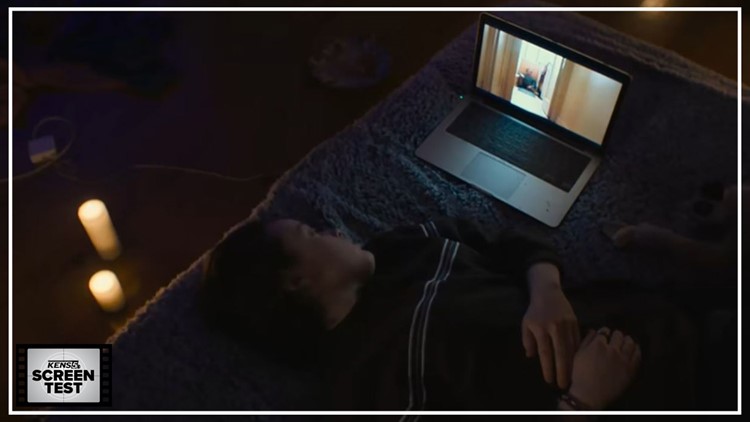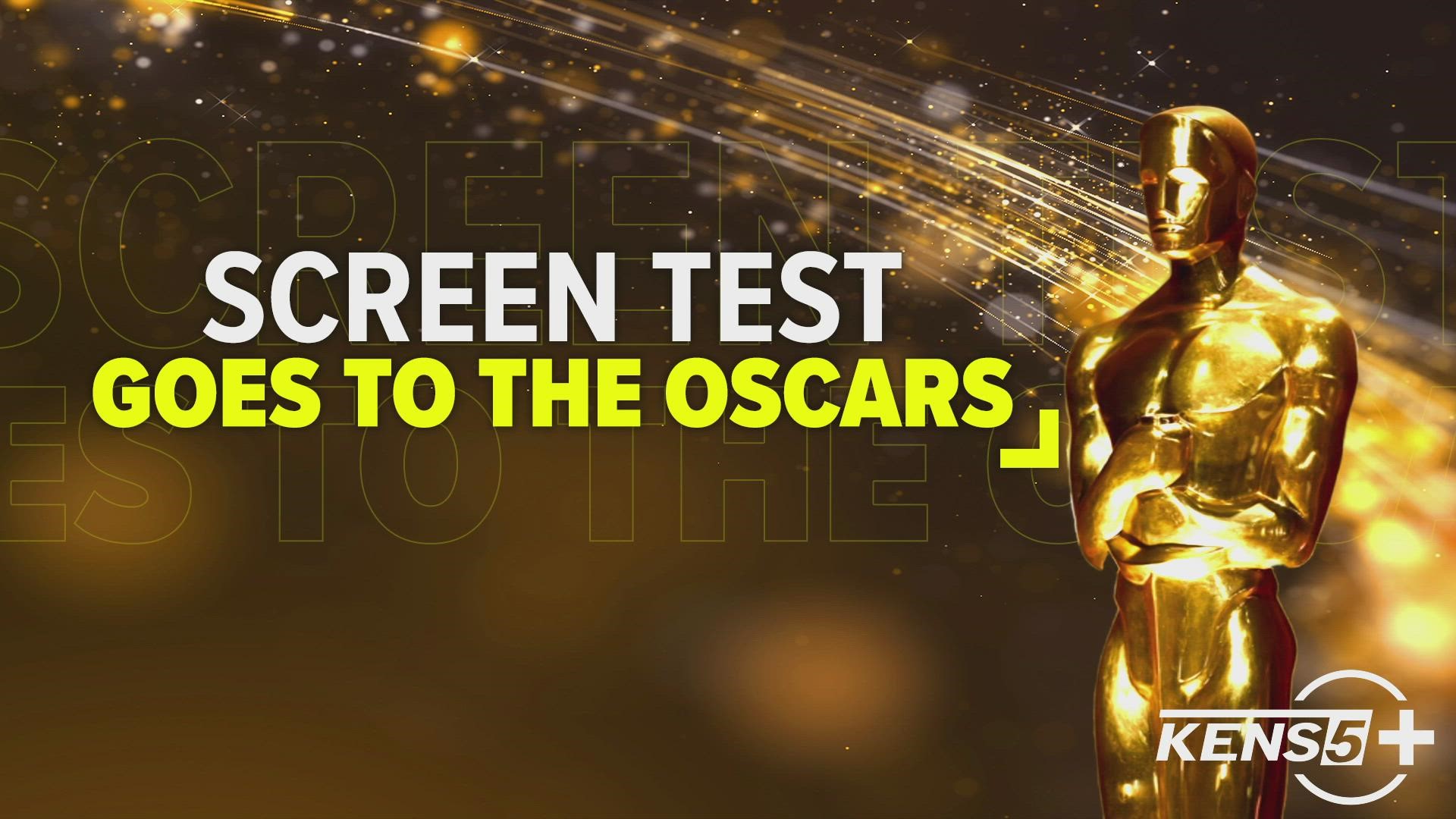TEXAS, USA — Darkness toggles between being an alienating force and a liberating companion in “We’re All Going to the World’s Fair,” writer/director Jane Schoenbrun’s seismic feature debut about the delineation of online power and powerlessness. As young Casey (Anna Cobb) sits at center-frame in her room, announcing into the camera her intention to participate in the mysterious role-playing game that gives the movie its name, nighttime practically shrouds her. Later, when the carousel of internet videos she puts off sleep to jump aboard loads another clip, the screen’s overpowering black functions at once as dare and invitation. Anything can happen when we enter this void. Anything will.
Moody, mysterious and mercurial, “We’re All Going to the World’s Fair” is a horror movie that encourages us to question the parameters of horror, as well as the durability of those boundaries. What is gained when we give ourselves over to the screen? What is lost? Casey’s “arrival” at the world’s fair is marked with a video only she can see, its glow dancing across her transfixed face in a hauntingly sublime sequence chiseling away at that which separates the digital and flesh-and-blood selves. What has been gained? We’ve only just met Casey, so can we possibly know what’s been lost?
Those questions remain at the fore of “We’re All Going to the World’s Fair” even as it becomes an ever-deepening wellspring of ideas, beckoning towards new horizons for the coming-of-age-via-the-internet subgenre in the process. That style of film has, to this point, been largely characterized by frantic aesthetic and furious dependency on audiences knowing better than the characters they’re watching.
Schoenbrun opts for a radically more empathetic approach, tying down our judgements, sympathies and worries about Casey to the version of herself that she chooses to show, the experiences she opts to share. It puts us in a vulnerable spot, but the baggy-shirt-loving teen’s journey also clearly sets out from a place of loneliness and cautious curiosity. It’s recounted in video diaries, Skype conversations and the lead-weighted suggestion that no matter what might be happening to her in this room, whatever awaits outside is scarier to consider.
The tone may be hushed in “We’re All Going to the World’s Fair,” the production ostensibly miniscule. But its implications are enormous in a time when we’re more comfortable than ever communicating through screens, and when the inevitability of digital mistranslation has been taken for granted.
Emphasizing the screen as both a filter and projector of truth, the movie embraces a visual spontaneity and storytelling discordance that resembles the chaos of a shuffled YouTube playlist we might have stumbled upon late one night in a digital back alley. Other internet denizens cycle in and out of the frame to share how the game has affected them, and while we might imagine Casey watching them alongside us, what these scenes most immediately convey is the inherently unpredictable nature of being online, the contract we make in never knowing what awaits the next scroll of the mouse.
Therein lies the brilliance of Schoenbrun’s film. In creating “We’re All Going to the World’s Fair” using the language of the internet – low-def graininess as first-draft candour, dreamlike ASMR as comforting dialect, the repeated use of a never-been-more-ominous buffering icon as ellipsis – the writer/director, who identifies as non-binary, blurs the line between author and participant to the point that a protagonist who was first our proxy becomes a new source of ambiguous fascination, and of horror. Cobb, acting in her feature debut, is a fearless avatar of that dichotomy; hers is a psychologically nimble performance pulsing with the recognition that taking up residence in the nocturnal online means setting the infrastructure of identity aflame.
Where does performativity begin and end when the screen, to say nothing of added effects and camcorder trickery, acts as enabler? As we enter a fourth decade of familiarity with these online spaces, it may be out of instinct that we find ourselves carefully searching the movie’s periphery for things that are or aren’t there—shapes in the dark to justify our anxiety or hints at potentially grander genre ambitions for a movie constantly skirting the edges of outright horror. “We’re All Going to the World’s Fair” can be an unbearably tense watch, but Schoenbrun excavates inexplicability and intimacy from the same place.
Which is just one way of saying the movie blows up cinematic conventions while playing with our assumptions. Implication proves to be a powerful force when wielded by Schoenbrun, but little in “We’re All Going to the World’s Fair” – including the appearance of a gun, a sense of lurking violence and the introduction of a much older participant in the World’s Fair Challenge (played by Michael J. Rogers) – is seen to its logical conclusions. That the film instead embraces a fluidity of narrative, tone and possibility is a testament to the pixelized infinity Schoenbrun understands is contained within a computer screen (and, for that matter, the cinema screen). Where the audience expects resolution, they instead offer a chilling, challenging reminder about the temporality of on-screen life.
“Someday soon, I’m just going to disappear,” Casey says at one point. Are the words a threat or a concern? We can’t quite know, though resurrection is as common an online occurrence as abrupt losses of connection. If “We’re All Going to the World’s Fair” conjures up one surefire truth from all its shapeshifting tendencies, it’s that the line between online exploration and imprisonment may be slimmer than we realize.
"We're All Going to the World's Fair" is not rated. It's now available to rent on digital platforms. Runtime: 1 hour, 26 minutes.
Starring: Anna Cobb, Michael J. Rogers, Holly Anne Frank
Written and directed by Jane Schoenbrun
2022
---
MORE REVIEWS:
- ‘The Secrets of Dumbledore’ Review: On cruise control through the wizarding world
- ‘Paris, 13th District’ Review: Love and loneliness in the City of Lights
- Movie reviews: The Northman gives plenty of twists and turns and killings and sorcery
- ‘Cow’ Review: An unflinching, undeterred documentary from Andrea Arnold
- Review: How 'Sonic the Hedgehog 2' manages to improve on a solid original
- SXSW Review: Multiversal madness reaches boundless new highs in Michelle Yeoh-led ‘Everything Everywhere All At Once’



